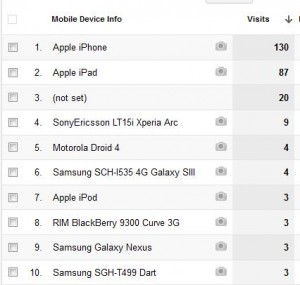by Glen Springer | Oct 28, 2015
 In the first blog of this series we outlined how the buying process has changed dramatically over the past several years. The Buyer, not the Seller, now controls the entire purchase process as B2B sales are shifting to consumer based. We also discussed what it is you need to consider and be prepared for if you are eager to drive meaningful cultural change and increased revenue for your organization. Part 2 will cover how your culture, attitude and team dynamics can impact your ability to increase revenue growth, and the need to facilitate a shift in your customer’s buying process, not your B2B sales process.
In the first blog of this series we outlined how the buying process has changed dramatically over the past several years. The Buyer, not the Seller, now controls the entire purchase process as B2B sales are shifting to consumer based. We also discussed what it is you need to consider and be prepared for if you are eager to drive meaningful cultural change and increased revenue for your organization. Part 2 will cover how your culture, attitude and team dynamics can impact your ability to increase revenue growth, and the need to facilitate a shift in your customer’s buying process, not your B2B sales process.
Longer sales cycles = Be prepared
You have to begin by accepting that buyers have extended their purchase cycle by 1.5X-2X (Sirius, 2012) and revenue growth is going to be both a marathon and a sprint. Your sales team still needs to remain focused on hitting revenue targets, however you need to accept that as deals enter the pipe and buyers are going through the first few stages of their purchase, some of them are going to hit the pause button. What is crucial is that you have a plan for what occurs next when this happens. Does the lead stay with the rep or does it go back to the inside sales team? Is there a way to stay in front of them without wasting the time of sales reps? What content will they want to digest in the interim?
Buyers want and expect to be educated first
It may be necessary to embrace the need to develop new disciplines and fully commit to content marketing. This is arguably the most radical change that needs to be made and it is also your most significant opportunity. Your marketing team will have to take your buyer further through your sales process because it is what your buyers demand. The days of generating leads through marketing and tossing them over the fence to the sales team are over.
Hint: Marketers can’t do this alone! They will need the support and contribution of your executive team and product specialists, acting as thought leaders. If marketers can effectively leverage your thought leaders, they can support the sales team exponentially, keeping them focused on selling.
Sales and marketing on the same team
The days of compartmentalized offices are over. For many companies, this is the biggest hurdle as it has become a cultural norm. B2B Sales doesn’t always care about what marketing does as long as it leads to more leads, and marketers don’t think sales appreciates or understands the work they do (and they are often correct). As with any successful team, to compete and win you are going to need to align sales and marketing with the tools, content and processes necessary to support your inside sales reps with content that demonstrates thought leaders and differentiators effectively. Mutual respect is key.
Technology is king – embrace it
The advent of marketing automation platforms, Google Analytics and CRM’s has led to the ability to bring sales and marketing teams together like never before. These technologies allow you to implement a Sales Architecture, Infrastructure, and Technology Platform that provides transparency and accountability throughout your entire sales process. Keeping score helps teams flourish. This isn’t rocket science; just head out to any Little League or Soccer Field on a Saturday during a game and compare it to what happens during practice. During exercises, energy level and focus fluctuates. Put them on the field where they are accountable for and measured by their results and everything changes. It’s a great deal more interesting and fun as well.
Finally, budget appropriately
As was previously mentioned, sales is now both a marathon and a sprint. What this means is, while we appreciate the need and pressure to hit quarterly numbers, it’s unreasonable to expect an effective process to fall into place that quickly. You need to plan on investing in this new engine for at least 4-6 months until you will start seeing constant results. Remember the scale of the shift you are undergoing. As the process becomes imbedded into your culture and your teams align with this new train of thought and start firing on all cylinders, revenue will increase and cost of sales will decrease. This dual-benefit allows you to utilize your increased revenue and cost-savings to grow the engine and produce exponential results.
Summary – Sales and Marketing as one unit
- Your buyer demands education
- They want access to thought leadership and product specialists
- Thought leaders can’t waste time on prospects that just want education
- Your buyer does not want to engage with sales until they are ready to purchase
- You must demonstrate you understand their situation and pain before engaging a prospect with sales
Everyone can understand the social contract between salesperson and buyer. The Seller sells, and the Buyer buys. Pain, gain, and solution selling are still important, but it is becoming increasingly important for your sales team and your marketers to get prospects on the phone by sharing thought leadership from your product specialists and executives. Pressuring the buyer to buy and introducing a sales rep prematurely may lead to winning a couple deals in the short term, but it will drive more deals into your competitor’s hands in the long term.
So the question remains – what does my B2B sales and marketing organization need to look like to create the proper demand for my sales team now that marketing’s job is to take buyers beyond just awareness and drive leads into my sales funnel? Look for our next blog in the series that outlines “The Core Competencies I Need From My Demand Generation Team.”
If you would like to learn more about how Gabriel Sales can apply some of what we have learned for your business specifically, contact us today.
by Glen Springer | Oct 27, 2015
Click the video below to get a sneak peak of the Digital Demand Operations Center where you can score leads for more accurate targeting.
<div class="wistia_responsive_padding" style="padding:56.25% 0 0 0;position:relative;"><div class="wistia_responsive_wrapper" style="height:100%;left:0;position:absolute;top:0;width:100%;"><iframe src="https://fast.wistia.net/embed/iframe/4g0xjuqec8?videoFoam=true" title="Wistia video player" allowtransparency="true" frameborder="0" scrolling="no" class="wistia_embed" name="wistia_embed" allowfullscreen mozallowfullscreen webkitallowfullscreen oallowfullscreen msallowfullscreen width="100%" height="100%"></iframe></div></div><!-- [et_pb_line_break_holder] --><script src="https://fast.wistia.net/assets/external/E-v1.js" async></script>
by Glen Springer | Oct 21, 2015
 This is the first blog in a five part series discussing how to increase B2B sales volume and how you can adjust your B2B lead generation, demand generation, and sales tactics to potentially double your revenue growth in the next 18 months.
This is the first blog in a five part series discussing how to increase B2B sales volume and how you can adjust your B2B lead generation, demand generation, and sales tactics to potentially double your revenue growth in the next 18 months.
This series discusses the shift in B2B sales (hint: buyers don’t buy the way they used to), the impact this change may have on your current business and approach, the growing importance of the role marketers must play in your sales process, and how you can turn this knowledge into a significant B2B sales and lead generation advantage.
There is a need to execute B2B sales and demand generation in a new manner. A recent study conducted by Adam Needles showed that companies that have embraced the concept of “selling to buyers the way they want to be sold” have seen a 157% increase in revenue over the past two years.
Only 10% of companies in the market have accomplished a successful adoption of this new paradigm according to Forrester Research, providing an opportunity to take advantage of your competitor’s unawareness. That same study suggests that a Fortune 2000 competitor will take 18 months and twice the expense to shift their culture due to resistance inherent in larger organizations.
The Shift: The Buyer (Not the Seller) Now Controls the Sales Process
Unless you’ve been MIA for the last ten years, you know that it is increasingly more difficult to get your buyer on the phone (our connection ratios have dropped from 18%-21% to 6%-11% over the past 2 years). Additionally, we are all aware that the sales cycle has increased between 1.5X-2X (that can be months, quarters, or even a calendar year depending on your sales cycle). This is all due to the buyer having taken control of the sales process and the abundance of information available. This simple fact is one thing you need to keep top of mind throughout this series and your sales execution.
Why Buyers are More Risk Adverse
It’s 2015, not 2006 anymore. The stock market fluctuates daily, R&D budgets are slashed regularly, and both real and imagined geopolitical and domestic issues are exacerbated by a rapidly increasing news cycle. Fewer aspects of the economy and business are perceived to be within our control which leads to tighter budget controllers who are more focused on mitigating this increased risk. Buyers have been forced to be smarter and more cautious with how they spend.
More People are Involved in the Buying Process
Since 2009, more decision makers are involved in the buying process (there is safety in making group decisions). According to a MarketingSherpa study, there are typically three people involved in transactions of 25K$-100K$ and anywhere from four to eight decision makers involved in deals over 100K$. Additionally, according to the Harvard Business Review, 90% of buying decisions now require input from both the technical expert and the business expert. What this has led to is the need for your team to educate and sell to more people with increasingly different needs.
SaaS, Telco, and Apple (to name a few) Have Transformed the B2B Sales Experience into a Consumer Sales Experience for All
SaaS companies have done a fantastic job converting the B2B sale into a consumer purchase experience. Now a buyer can come to a website, find the products they are interested in, conduct additional research, and in some cases just plug in the corporate credit card. In most cases, buyers can avoid speaking to a sales rep altogether, unless they make the conscious decision to be “sold.” Coupled with the fact that buyers feel more comfortable making large purchases due to the abundance of information available on the web, buyers are becoming more and more comfortable making these decisions without consulting a sales rep.
Consider how you purchase your home media now: I personally managed to bundle phone service, internet, cable television, and a sports package while layering in Netflix and Hulu streaming through a Blue Ray player and my kid’s Wii without ever speaking to a “sales person” other than to schedule installation. For another example, look at the experience provided by Apple retail locations. The “sales reps” greet you, allow you to play with the technology, have you request assistance when you are ready to buy, and they pull out their iPhone to conduct a $500-$2K transaction. B2B sales and marketing teams have had the bar raised and need to strive to improve the ease of education wherever possible.
Digital Sales Content = Critical
YouTube, Webcasts, Podcasting, Twitter, and Facebook are all household names which implies they have a long-standing history. However they have only been truly prominent for several years, and serious adoption in the B2B sale is less than a couple years old. The average buyer now digests 12 pieces of digital content on average before they purchase (up from five in 2011) and this trend is expected to continue.
Similar to SaaS sales and other technologies we discussed above, consider how your personal network consumes “entertainment” media. Just a few nights ago I looked around my living room and my wife was on her iPhone posting videos of our kids for the grandparents on Facebook, while simultaneously catching up on twitter. My son was on the iPad checking out MLB stats and my daughter was self-publishing a “picture-book” on the desktop while I was watching an NFL game (while DVRing Breaking Bad) and flipping through the Sunday New York Times on my iPhone. Did I mention I was also pulling a Google Analytics report for an upcoming meeting that compared mobile traffic during a time period in 2011 vs. 2012 (see below)?

Mobile Traffic Oct 2012
As consumers we are accustomed to digesting content where we want to and when we want to. We are consuming across platforms and mixing our consumption of entertainment and work-related content throughout the day. It’s easy – we feel entitled and we feel educated. This same philosophy must be applied to how you sell to your B2B buyer. They should be able to purchase your solution when they want to, and in the manner they desire, whether that be on Monday morning or Sunday evening.
The bottom line is simple: you need digital content!
You need to share it effectively and deliver your message in multiple formats so your buyers can educate and buy on their schedule, not yours. Remember, there are more and more buyers involved in the process that will want to digest specific material on their own time.
Meet the Buyer Where They Are in Their Buying Cycle – Don’t Force Them into Your Sales Cycle!
Inbound leads are coming in at earlier stages of the buying cycle when buyers are still in the education phase. This means your initial job as a sales and marketing team is to educate first, helping the buyer before you “sell” to them. This is tricky because it can increase your costs if you are overinvesting in selling to buyers that are not ready to transact. The flip side, which is potentially more daunting, is that we are now seeing 25% of buyers make their purchase decision after self-education and short listing online (Sirius, 2012). This means your team needs to act quickly and decipher where a buyer is in the buying cycle so they can be treated appropriately.
If you sell too hard, too early we know that:
- 70% of leads are passed to Sales Reps before they are ready to engage (MarketingSherpa, 2012)
- 80% of mishandled leads will buy from a competitor (Forrester, 2011)
If you get it right we know that:
- Well-nurtured leads close 23% faster and result in 40% more revenue (Aberdeen, 2012)
Summary
What is happening right now is not a small shift. It is a fundamental transformation that was the promise of an interconnected world after the internet first reared its head 30 years ago. In the last two years, this shift has accelerated dramatically. Since the birth of modern banking during the Renaissance, the majority of transactions have been driven by a seller-buyer relationship. The seller had information they shared with the buyer, and the buyer made a purchase. What we are experiencing now are the final stages of this dramatic shift that has been slowly taking place right underneath our noses since Google first organized the internet for immediate access. The buyer expects and desires to make a purchase without the intervention of sales whenever possible. They expect honest and authentic information, and demand it now. If you are not prepared to do this for your buyer (making the buying process fast, easy, and not sales-rep dependent) and your competitor is, you will lose.
To learn the impact this cultural shift has on your own sales and marketing culture, please check out the next blog in this series for things to consider as you ponder the looming question: What does all of this mean for your business?
If all of this seems a bit daunting, you can also check out our Sell Smarter, Sell Faster Whitepaper to learn more about short term tactics you can implement with your team right now.
by Glen Springer | Oct 7, 2015
 Every call is important, here are strategies and techniques to help secure those 2nd, 3rd, and 4th (and so on) phone calls with potential leads. Obviously a cold call is just the tip of the iceberg when interacting with a new prospect. A question that burns on every sales rep’s mind is: what should I do to get this lead to commit to another conversation?
Every call is important, here are strategies and techniques to help secure those 2nd, 3rd, and 4th (and so on) phone calls with potential leads. Obviously a cold call is just the tip of the iceberg when interacting with a new prospect. A question that burns on every sales rep’s mind is: what should I do to get this lead to commit to another conversation?
In a recent blog we recently, detailed 6 Questions to Ask All New Leads that will help you drive meaningful interactions with prospects, ultimately filling your pipe with better opportunities. In this blog, we will outline 10 B2B sales techniques and strategies that can be used along with those 6 questions to help successfully move opportunities through their buying process.
Once you have gained the actionable prospect information by asking those 6 questions, you need to get them to commit to another meeting. What’s the best approach to set next steps?
We have compiled a list of ten strategies and techniques to accomplish this. There is no single way to address this problem as every lead is unique. However, through direct questioning and technique, you can employ any number of these strategies to successfully move the conversation forward.
Identify what stage of the buying cycle the prospect is at and don’t try and force them to another stage. Give them the opportunity to get there by providing appropriate content.
This is crucial, and should be done for every lead that is not immediately disqualified on a cold call. If you try and set a business proposal meeting with a lead that is barely aware of the existence of a new field of technology, you will quickly find your way to a “no.” Help them along their buying process through your selling techniques and marketing content.
Be polite and professional first and foremost.
Always remain polite in the initial interactions with new prospects, but be wary of trying to create too significant of a relationship too early in the process. Many leads want to understand that you respect that their time is short, their phones are busy, and they want to be in control. To accomplish this, it is helpful to be short, succinct, and direct in your initial conversations, so that the expectation is set early in the opportunity.
Provide all of your contact information
You would think this is a no brainer but it is the standard in sales interactions today to successfully provide information for all means of contact: phone, email, website, etc.
Ask them if there is anyone else that would benefit from communicating with you and seeing your educational information
The more people you can connect with in an organization, the better. You want to get them talking about your solutions, sharing it with others who may be involved with the business process or buying process.
Ask them for a good time for a follow-up conversation
It’s amazing how easy it is to get a second meeting on the books just by simply asking for an available time to have it. If they say they don’t have time this week, ask them about next week. Don’t be so easily dismayed to hang up the phone without having a firm second conversation scheduled.
Ask them for their preferred way to communicate during your next conversation
Some people hate answering emails, others won’t answer their phones unless they are completely unpreoccupied. Give your prospects the opportunity to tell you the way they prefer to communicate.
Make sure you’ve got the right person
Many people will allow you to send them any and all information. Whether they are trying to find distractions from their own work, or if they’re just curious about the space, it is important not to waste valuable time on leads that have no impact on technology implementation, solution service decisions, or buying power.
Give them homework
This can be simple: “Visit our website when you have a moment, our URL is _________” Or, you can provide relevant content for them to digest. Maybe you have demonstration videos that buyers who are farther in their process would benefit from seeing. Whatever tool you use, asking your prospects to review content in between connections is crucial in staying relevant within their consideration set.
Always, always, always finish a conversation with next steps
The first ten suggestions are all directed at successfully accomplishing just this. A conversation without next steps planned gives the opportunity for your prospect to fall into someone else’s pipe before you’ve even successfully engaged them in yours. Time, mode of communication, and task to be completed by both parties – all three of these aspects are crucial in a successful next steps plan.
Know when to not push for a second contact, but rather circle back in a timely fashion.
Sometimes you catch a lead in a meeting, others simply hate cold calls. It is a useful talent to be able to discern when to just let the lead go, and give them another try without requiring anything from them, including listening to your extensive pitch. This should not be used except in extreme circumstances, as we believe every valid target prospect will be willing to engage with you if you provide them content that supports the stage of the buying cycle they are in.
The more techniques and strategies you can employ in your initial contact with a new prospect, the greater your success will be in filling your pipe with quality opportunities and moving more deals to closing.

by Glen Springer | Oct 7, 2015
 Every call is important for B2B sales.
Every call is important for B2B sales.
Here are strategies and techniques to help secure those 2nd, 3rd, and 4th (and so on) phone calls with potential leads. Obviously a cold call is just the tip of the iceberg when interacting with a new prospect. A question that burns on every sales rep’s mind is: what should I do to get this lead to commit to another conversation?
In a recent blog, we detailed 6 Questions to Ask All New Leads that will help you drive meaningful interactions with prospects, ultimately filling your pipe with better opportunities. In this blog, we will outline 10 B2B sales techniques and strategies that can be used along with those 6 questions to help successfully move opportunities through their buying process.
Once you have gained the actionable prospect information by asking those 6 questions, you need to get them to commit to another meeting. What’s the best approach to set next steps?
We have compiled a list of ten strategies and techniques to accomplish this. There is no single way to address this problem, as every lead is unique. However, through direct questioning and technique, you can employ any number of these strategies to successfully move the conversation forward.
Identify what stage of the buying cycle the prospect is at and don’t try and force them to another stage. Give them the opportunity to get there by providing appropriate content.
This is crucial, and should be done for every lead that is not immediately disqualified on a cold call. If you try and set a business proposal meeting with a lead that is barely aware of the existence of a new field of technology, you will quickly find your way to a “no.” Help them along their buying process through your selling techniques and marketing content.
B2B Sales 101: Be polite and professional first and foremost.
Always remain polite in the initial interactions with new prospects, but be wary of trying to create too significant of a relationship too early in the process. Many B2B sales leads want to understand that you respect that their time is short, their phones are busy, and they want to be in control. To accomplish this, it is helpful to be short, succinct, and direct in your initial conversations, so that the expectation is set early in the opportunity.
Provide all of your contact information
You would think this is a no brainer but it is the standard in sales interactions today to successfully provide information for all means of contact: phone, email, website, etc.
Ask them if there is anyone else that would benefit from communicating with you and seeing your educational information
The more people you can connect with in an organization, the better. You want to get them talking about your solutions, sharing it with others who may be involved with the business process or buying process.
Ask them for a good time for a follow-up conversation
It’s amazing how easy it is to get a second meeting on the books just by simply asking for an available time to have it. If they say they don’t have time this week, ask them about next week. Don’t be so easily dismayed to hang up the phone without having a firm second conversation scheduled.
Ask them for their preferred way to communicate during your next conversation
Some people hate answering emails, others won’t answer their phones unless they are completely unpreoccupied. Give your prospects the opportunity to tell you the way they prefer to communicate.
Make sure you’ve got the right person
Many people will allow you to send them any and all information. Whether they are trying to find distractions from their own work, or if they’re just curious about the space, it is important not to waste valuable time on leads that have no impact on technology implementation, solution service decisions, or buying power.
Give them homework
This can be simple: “Visit our website when you have a moment, our URL is _________” Or, you can provide relevant content for them to digest. Maybe you have demonstration videos that buyers who are farther in their process would benefit from seeing. Whatever tool you use, asking your prospects to review content in between connections is crucial in staying relevant within their consideration set.
Always, always, always finish a conversation with next steps
The first ten suggestions are all directed at successfully accomplishing just this. A conversation without next steps planned gives the opportunity for your prospect to fall into someone else’s pipe before you’ve even successfully engaged them in yours. Time, mode of communication, and task to be completed by both parties – all three of these aspects are crucial in a successful next steps plan.
Know when to not push for a second contact, but rather circle back in a timely fashion.
Sometimes you catch a lead in a meeting, others simply hate cold calls. It is a useful talent to be able to discern when to just let the lead go, and give them another try without requiring anything from them, including listening to your extensive pitch. This should not be used except in extreme circumstances, as we believe every valid target prospect will be willing to engage with you if you provide them content that supports the stage of the buying cycle they are in.
The more techniques and strategies you can employ in your initial contact with a new prospect, the greater your success will be in filling your pipe with quality opportunities and moving more deals to closing.
 In the first blog of this series we outlined how the buying process has changed dramatically over the past several years. The Buyer, not the Seller, now controls the entire purchase process as B2B sales are shifting to consumer based. We also discussed what it is you need to consider and be prepared for if you are eager to drive meaningful cultural change and increased revenue for your organization. Part 2 will cover how your culture, attitude and team dynamics can impact your ability to increase revenue growth, and the need to facilitate a shift in your customer’s buying process, not your B2B sales process.
In the first blog of this series we outlined how the buying process has changed dramatically over the past several years. The Buyer, not the Seller, now controls the entire purchase process as B2B sales are shifting to consumer based. We also discussed what it is you need to consider and be prepared for if you are eager to drive meaningful cultural change and increased revenue for your organization. Part 2 will cover how your culture, attitude and team dynamics can impact your ability to increase revenue growth, and the need to facilitate a shift in your customer’s buying process, not your B2B sales process.
 This is the first blog in a five part series discussing how to increase B2B sales volume and how you can adjust your B2B lead generation, demand generation, and sales tactics to potentially double your revenue growth in the next 18 months.
This is the first blog in a five part series discussing how to increase B2B sales volume and how you can adjust your B2B lead generation, demand generation, and sales tactics to potentially double your revenue growth in the next 18 months.
 Every call is important, here are strategies and techniques to help secure those 2nd, 3rd, and 4th (and so on) phone calls with potential leads. Obviously a cold call is just the tip of the iceberg when interacting with a new prospect. A question that burns on every sales rep’s mind is: what should I do to get this lead to commit to another conversation?
Every call is important, here are strategies and techniques to help secure those 2nd, 3rd, and 4th (and so on) phone calls with potential leads. Obviously a cold call is just the tip of the iceberg when interacting with a new prospect. A question that burns on every sales rep’s mind is: what should I do to get this lead to commit to another conversation?

 Every call is important for B2B sales.
Every call is important for B2B sales.